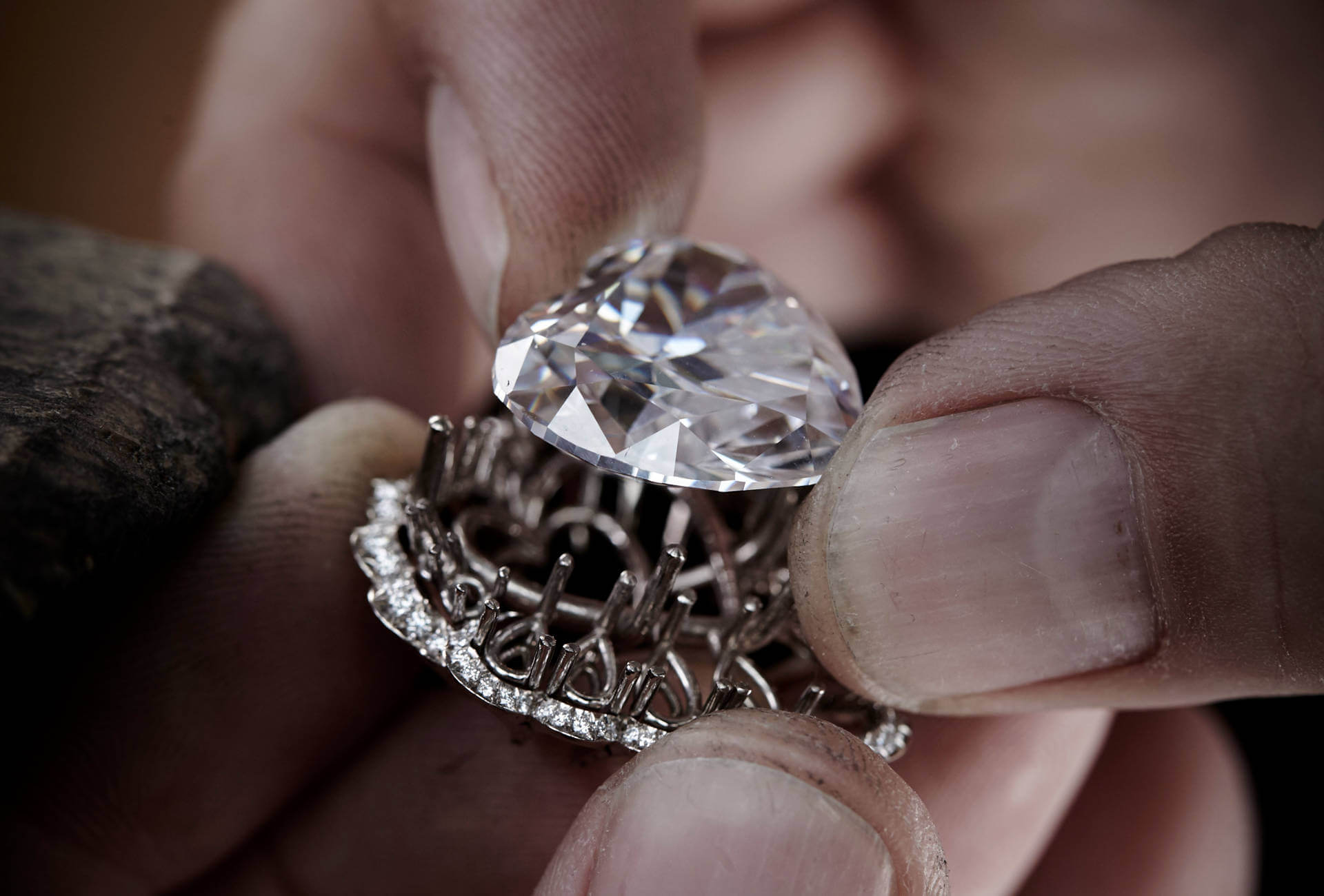Diamonds signify wealth and have done for centuries. From Marylin Monroe declaring Diamonds are a Girl’s Best Friend in the 1950s up to Lil Xan’s Diamonds in 2018, they are also a part of celebrity culture. Think Youtuber Jeffree Star bragging about a diamond-paved Birkin bag or Kim Kardashian flashing her diamond-encrusted grills on Instagram. In 1982 investigative journalist Edward Jay Epstein published a piece in The Atlantic to get to the bottom of our diamond obsession, naming it the Diamond Invention or “the creation of the idea that diamonds are rare and valuable, and are essential signs of esteem.” Epstein describes how “the diamond invention is far more than a monopoly for fixing diamond prices; it is a mechanism for converting tiny crystals of carbon into universally recognised tokens of wealth, power, and romance.” But how does this invention hold up today?
A changing world
In the watch world, diamond-studded timepieces are mainstays of many collections, being the jewels at the centre of high jewellery pieces. But the future of diamonds is not so bright anymore. In the 1990s the United Nations coined the term ‘blood diamonds’, sparking controversy and painting diamonds in a different light. Today’s diamond market is in flux. Older mines are closing and there aren’t enough new mines opening to replace them. In a report on the diamond market, diamond researcher and analyst Edhan Golan states that “the market, from mining to retail, went through a major crisis” in 2019.
This crisis is the product of socio and economic changes. The UN’s World Social Report for 2020 reveals that over 70% of the world’s population live in countries where the wealth gap is rapidly growing. People are more focused than ever on sustainability, while the uncertainty of Covid-19 makes diamonds a luxury beyond the reach of most. Our idea of what constitutes luxury is also changing. Highsnobiety defines New Luxury as being not “just about what you wear, but also what you know.” As people question where their possessions come from, why they want them and who is making them, the diamond industry can no longer rely on unconditional acceptance of the Diamond Invention; it must adapt to a new brand of conscious consumer.
Ultra-extravagance on the rise
Despite this changing mindset, diamonds are still seen as symbols of wealth. In January Louis Vuitton kicked off 2020 with the purchase of the second-largest rough diamond in history for ‘millions of dollars’ (the exact amount is undisclosed). Other brands are also riding the high jewellery train: Gucci released a Haute Joaillerie collection in March 2019, as did Giorgio Armani Privé. Glittering gems, diamonds among them, have clearly lost none of their appeal. According to a report by Grand View Research, the jewellery market is set to grow in worth to USD 480.5 billion by 2025, thanks to disposable income on the rise in countries like China, India and Hong Kong. The report also attributes market growth to brands such as Tiffany, which are demonstrating how the jewellery industry can adapt to a more sustainably focused world by being more transparent about sourcing (in January 2019 Tiffany announced it would disclose the provenance of its new diamonds and was committing to 100% geographic transparency).
It would seem, then, that two trends co-exist: the continued belief in the exclusivity and symbolic value of diamonds conveyed by the Diamond Invention, and the demand for transparency and sustainability championed by New Luxury.
Lab-grown diamonds
In 2018 we asked whether lab-grown diamonds could be a sustainable and more affordable alternative to mined diamonds. Since then, interest in these diamonds has increased worldwide at the same time as the technology to produce them becomes more widespread. In 2017 MVI Marketing conducted a survey on Millennials: 70% of respondents said they would consider a lab-grown diamond for an engagement ring; a further indication of changing attitudes towards sustainability that make lab-grown diamonds an attractive option.
A lab diamond can be grown in just ten days and costs ten times less than a mined diamond. This runs counter to the messages used to market natural diamonds, in particular their rarity (last year the Diamond Producers Association launched the Real is Rare campaign with the slogan ‘Three Billion Years in the Making’). It’s telling that De Beers, the world’s largest diamond producer, has its own Lightbox brand of jewellery made with lab-grown diamonds. Advertising and PR for the brand in fact repurposes features of the Diamond Invention, shifting the focus to “groundbreaking technology” and a process that took 30 years to develop, or the number of man hours that go into producing these diamonds, to adapt the image of high luxury already associated with diamonds to a product that better aligns with contemporary values.
The diamond market must address new definitions of luxury as the old symbols of wealth and success are called into question and our collective attention moves towards more sustainable solutions. The industry may be changing to meet these new expectations, the core reasons behind diamonds’ value remain the same; they are simply communicated in a different way. It’s just a matter of the Kim Kardashians keeping them in vogue.











